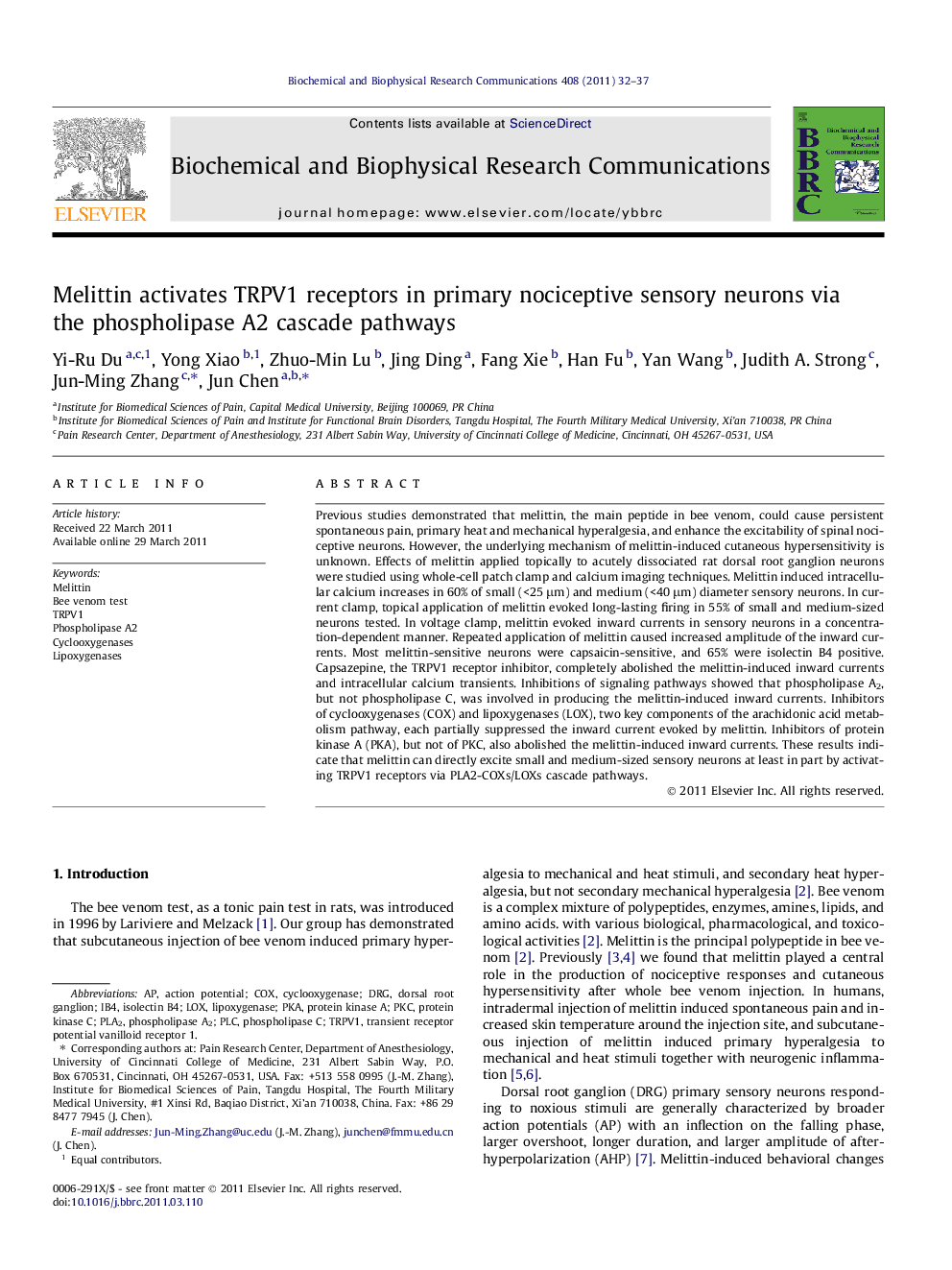| Article ID | Journal | Published Year | Pages | File Type |
|---|---|---|---|---|
| 1930741 | Biochemical and Biophysical Research Communications | 2011 | 6 Pages |
Previous studies demonstrated that melittin, the main peptide in bee venom, could cause persistent spontaneous pain, primary heat and mechanical hyperalgesia, and enhance the excitability of spinal nociceptive neurons. However, the underlying mechanism of melittin-induced cutaneous hypersensitivity is unknown. Effects of melittin applied topically to acutely dissociated rat dorsal root ganglion neurons were studied using whole-cell patch clamp and calcium imaging techniques. Melittin induced intracellular calcium increases in 60% of small (<25 μm) and medium (<40 μm) diameter sensory neurons. In current clamp, topical application of melittin evoked long-lasting firing in 55% of small and medium-sized neurons tested. In voltage clamp, melittin evoked inward currents in sensory neurons in a concentration-dependent manner. Repeated application of melittin caused increased amplitude of the inward currents. Most melittin-sensitive neurons were capsaicin-sensitive, and 65% were isolectin B4 positive. Capsazepine, the TRPV1 receptor inhibitor, completely abolished the melittin-induced inward currents and intracellular calcium transients. Inhibitions of signaling pathways showed that phospholipase A2, but not phospholipase C, was involved in producing the melittin-induced inward currents. Inhibitors of cyclooxygenases (COX) and lipoxygenases (LOX), two key components of the arachidonic acid metabolism pathway, each partially suppressed the inward current evoked by melittin. Inhibitors of protein kinase A (PKA), but not of PKC, also abolished the melittin-induced inward currents. These results indicate that melittin can directly excite small and medium-sized sensory neurons at least in part by activating TRPV1 receptors via PLA2-COXs/LOXs cascade pathways.
► As the major primary active component of bee venom, melittin is shown to be able to activate a subpopulation of primary sensory neurons. ► Activation of primary sensory neurons by melittin is demonstrated to be mediated by activation of a thermonociceptor, TRPV1 that requires involvement of phospholipase A2–cyclooxygenases/lipoxygenases cascade pathways. ► Activation of a subpopulation of nociceptor cells by melittin contributes to development of spontaneous nociception and primary heat hyperalgesia caused by subcutaneous bee venom.
